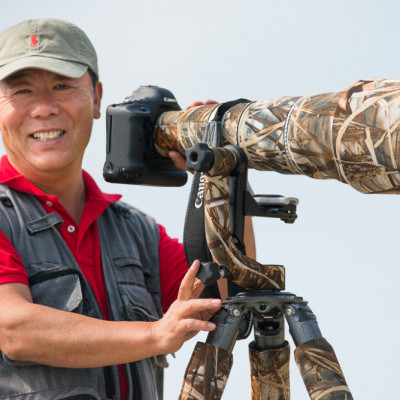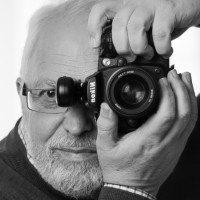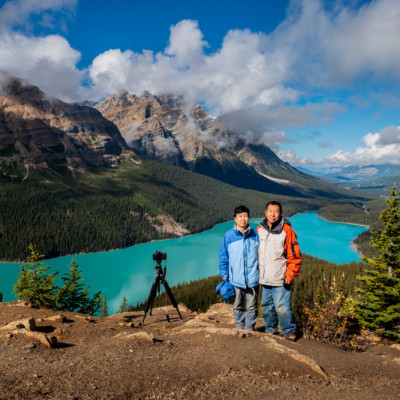SEARCH






|
|
|
|


by Editor HJ Yang
Edited and published by Yvette Depaepe, the 5th of July 2024
After seeing amazing wildlife in Antarctic region, we wanted to see polar bear cubs in Arctic region. We were told that in Northern America only place we might see the new born polar bear cubs just out of their dent is near Wapusk National Park, Manitoba, in northern Canada. Only time we might see polar bear cubs is during February and March. We booked nine day trip at Watchee Expedition for February of 2018. We flew in Winnipeg, Manitoba, stayed a hotel next to airport one night and flew further north to Churchill next day.
Churchill is an Arctic port town in northern Manitoba, Canada, on the west shore of Hudson Bay, roughly 140 km (87 mi) from the Manitoba–Nunavut border. It is most famous for the many polar bears that move toward the shore from inland in the autumn, leading to the nickname "Polar Bear Capital of the World”. Churchill is located at the mouth of the Churchill River on the 58th parallel north, far above most Canadian populated areas. Churchill is far from any other towns or cities, with Thompson, approximately 400 km (250 mi) to the south, being the closest larger settlement. Manitoba's provincial capital, Winnipeg, is approximately 1,000 km (620 mi) south of Churchill. While not part of the city, Eskimo Point[5] and Eskimo Island is located across the river at the former site of the Prince of Wales Fort.
Various nomadic Arctic peoples lived and hunted in this region. The Thule people arrived around the year 1000 from the west, the ancestors of the present-day Inuit. The Dene people arrived around the year 500 from farther north. Since before the time of European contact, the region around Churchill has been predominantly inhabited by the Chipewyan and Cree peoples.
Europeans first arrived in the area in 1619 when a Danish expedition led by Jens Munk wintered near where Churchill would later stand. In 1717, the Hudson's Bay Company built the first permanent settlement, Churchill River Post, a log fort a few kilometres upstream from the mouth of the Churchill River. The trading post and river were named after John Churchill, 1st Duke of Marlborough, who was governor of the Hudson's Bay Company in the late 17th century. The fort, Prince of Wales Fort, was rebuilt at the mouth of the river. The fort was primarily built to capitalize on the North American fur trade, out of the reach of York Factory. It dealt mainly with the Chipewyan living north of the boreal forest. Much of the fur came from as far away as Lake Athabasca and the Rocky Mountains.
Weather was extremely cold with windchill temperature at -58C when we arrived at Churchill.
We had to rent heavy boots, coats and pants to keep us warm. Our lodge is 40 miles south of Churchill. Since the railroad track to the lodge was damaged last winter, we had to take their specially equipped Matt truck-van driving on the frozen field since there is no road. It took us four hours to get us to our Lodge in dark.
Our lodge, Watchee, is next to the Wapusk National Park.
Wapusk National Park is Canada's 37th national park, established in 1996. The name comes from the Cree word for polar bear. Located on the shores of Hudson Bay in the Hudson Plains ecozone 45 kilometres (28 mi) south of Churchill, its accessibility is limited due to its remote location and an effort to preserve the park. Wapusk National Park is the best place to look for polar bear cubs as they (and their mothers) emerge from their dens. In winter, the polar bears of Wapusk National Park come ashore as the ice on the Hudson Bay melts, waiting on the tundra until the water freezes again. Pregnant females remain ashore, sheltered in maternity dens within the peatlands in Wapusk, giving birth over the season.
The lodge only opens six weeks in the whole year, sitting on a little hill surrounding by swamp. It can only take 20 some guests. However inside it is very warm and comfortable with satellite TV though internet works only some time. Two local native brothers, Michael and Morris Spence have owned and operated the place since 1994. Michael has also served as city mayor for a long time. We met many wildlife photographers, including Japanese photographer, Shogo Asao and Switzerland and Canadian photographer, Daisy Gilardini, both brought their groups with them, as well as a couple from German who shared information about other wildlife photo locations with us. We met two people from China all from north-eastern region.
Day one it was too cold for equipment to go out so we stayed inside. Second day out our Matt truck-van was stuck in snow and others had to help to dig it out. However, we saw arctic fox eating leftover caribou from wolves, but no bears. Third day we saw a lot of caribou, but still no bear. Michael told us that it was first time they saw caribou in this area in more than ten years. Caribou attracts wolves, which are dangerous to bear cubs. The main way for them to track bear is through their footprint. Due to many caribou and wolves, now it was very hard to see bear’s footprints around bank of frozen lakes which usually bears dent. The fourth day and fifth day we still had not seen any bear yet. Most of people only booked six days. So tomorrow would be their last day and last chance. During morning briefing on that day Morris was confident that we would see bears. Luckily we did only after less than two hour out, mom bear with twin cubs, first hidden in bush and later came out. Everyone was happy.
The best day for us came on Day 8 between two groups, the first group just left and the second group had not come yet. Only a few guests with us including leading photographers for groups. We all went out with one Matt Truck-van. Weather was perfect and we found a family with mom and twin cubs, play next to trees. While we focused on the bear family, suddenly a brave Mole came to check out cubs, climbing to the cub’s face and the cub tried to catch it. However it escaped the cubs, but unfortunately later becoming Mom’s food. We stayed with this family for whole day till they moved out in the golden evening light.
Four years late in 2022, we went back again to the same place, looking for polar bear cubs. This time we booked 11 day trip. When we stayed over night for dinner, in Winnipeg, we met our friend, Phillip Chang (phillipchang) and his friend Yin Li. I have known Phillip for a long time, but first time met in person. They booked the same trip. We had to stayed at Churchill over night for next day, taking the train to the station near the lodge. Then we rode the Matt truck-van to the lodge. So it took us whole three days from home to get at the location.
However, we did not see polar bear or cubs in first eight days this time. We only saw one snow owl sitting on the ice on the lake bank, like stature. However, it was the first time for me to see the snow owl. We took some photos. There were no Caribou this time. We did see some amazing northern lights, dancing in night sky with purple and green colour.
Four people, two from South Caroline and Max Block, a college student from California and his guide, all first time, only booked seven days and even Michael let Max and his guide stay one more day, still they had to leave next day without seeing any bear cub. We felt so sorry for them. Fortunately for the rest of our first group and new group who came the second week, on the ninth day, we went out and saw the triplet cubs with mom in the snow behind threes. We were told that bear usually has one or two cubs. It is very rarely for the bear to have triplet cubs. The last time they saw the triplet cubs was in 2008, more than fourteen years ago. We watched their play and mom feed the cubs. We found them again next day and follow them in evening light till they went away to distance on the frozen Fletch Lake.
The polar bear mom and her cubs are amazing, watching them play and mom taking care of her cubs, so gentle, so soft and careful. When you watch them play, you feel that whole world belong to them, whether under winter strong cold windy snow or bright sun. They are so free and careless of human watching them. They just do what they want to do, living a life they desire. Their life is so simple, bringing next generation into this world, taking care them. In three or four years they will kick cubs out and let them find their own life. It seems that they know who they are and what they are doing here on the earth. Do we? We human constantly search for the meaning of life. Shall we just simply live and enjoy our life like polar bear?
Life of the polar bear depends and relies on the polar ice. However, the polar ice is shrinking year after yea due to the climate change now. We shall respect and protect the environment so polar bear can continue their life and our next generation can still enjoy watch them play in wildness.
In this remote area, life is much better without our human interruption. Mother Nature provides everything. Look up the sky and look at the distance. It is so calm, so peaceful filled with all magic and wonders. When you watch the sky, seeing the northern lights dancing and thousands upon thousands of stars lightened up at night and when you watch these polar bears play and live, you will forget everything that was important to you yesterday. You will feel that we have so much to learn from nature. No matter what technologies, we human have, including latest GAI, We so called artists could not and will not create more beautiful work than does the nature.
Wildness is calling and nature is calling. Let us go to the wildness and enjoy nature.
We human shall learn from wildlife to have a simple and joyful life. Nature will purify your soul and wash all your life baggage away.
Wind-chill Temperature was -58C. It was so cold that hot water was frozen when being throw up to air.

Cracks of frozen Lake

Northern Lights
'Night in Wapusk I'
Caribou first seen in a decade in the area.

A lonely Wolf in distance

Arctic Fox, eating leftover of caribou from wolves.

Polar bear Mom with twin cubs




While we focused on the bear family, suddenly a brave Mole came to check out cubs, climbing to the cub’s face and the cub tried to catch it. However it magically escaped from the cub’s mouth. We had no ideal how it did that. Unfortunately later it did not escape Mom’s paw and became her food. We stayed with this family for whole day till they moved out in the golden evening light.


Playful Twin cubs

'Triplet'
'Just have fun'
'mom with two cubs II'
'Follow me-Mom polar bear followed by twin cubs'
'Follow mom III'
About Editor Huijun (HJ) Yang, Ph.D.
Dr. HJ Yang, Scientist, Businessman and Nature Photographer, writes about his photo trips around the world and his personal view on art, science, philosophy and life experience. Some of his writings are below:
HJ Yang - Giving a voice to nature through photography
HJ Yang's Journey to Baffin Island
HJ Yang - Photography strongly connected to nature
HJ Yang's Journey: Patagonia Special Expedition
HJ Yang’ Journey: Emperor Penguins on Snow Hill Island (next article in the 1x magazine - coming soon)
Book
Wave Packets and Their Bifurcations in Geophysical Fluid Dynamics, Applied Mathematical Sciences, 85, Springer, New York, NY 1991.
 | Write |
 | Phillip Chang CREW Wonderful image and great story. Thank you my friend and dear Yvette. |
 | Miro Susta CREW Very interesting reading accompanied with excellent wildlife pictures, many thanks and congratulations for bringing it to us. |
 | Eduardo Blanco García PRO
Magnificent
|
 | Karen Kolbeck PRO |
 | Wanghan Li PRO Love reading your detailed, vivid article about your two trips so that I know a little more about your adventures! Great! Love your wonderful and lovely photos! |